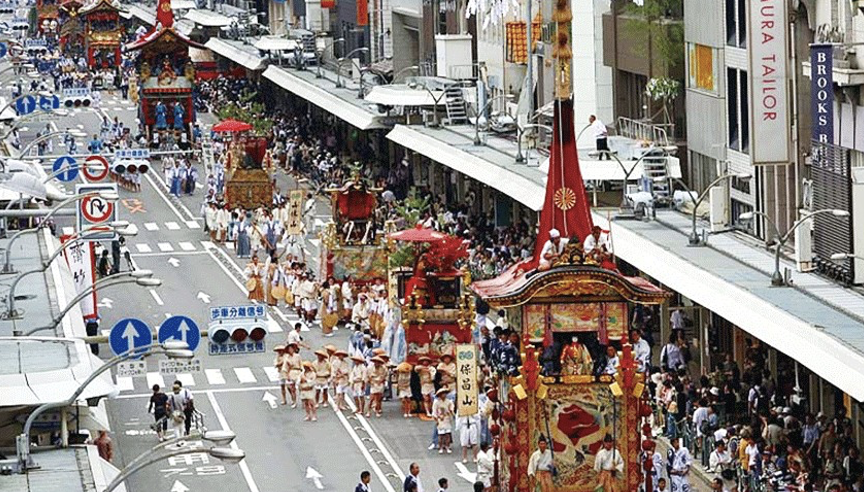July of the Famous Gion Matsuri (“Japanese Annual Summer Festival”)
There’s nothing more lavish than one of the most famous summer festival located in Kyoto, Japan. Celebrated on the very first day of July and continue throughout the month where there will be countless different rituals, events, entertainment, and parade. Hoards of pedestrians dominate downtown streets. The event itself is spread throughout the city since it takes a whole month. It is also known for its massive parade consist of large floats or also known as Yamaboko Junko.
History
Dated all the way to the 9th century when the emperor dedicated 66 pikes and ordered prayer and festivities to be carried out at Yasaka Shrine annually to appease the Gods and stop the current running plague from ravaging the cities. The festival has been carried out since 970, with floats since 999 and has only been stopped once for 33 years during the Ōnin Wars in the 15th century.
Although the ritual used to be based on a purification ritual, eventually Gion Matsuri changed itself over the centuries and became a symbol of wealth by merchants and wealthy citizens of the Kamakura Period through the level of details on the floats. The merchants are the main reason for the additional artwork originating from the middle east and Europe incorporated in the floats from the 16th century.
Purification Rituals
Purification rituals are divided into two rituals that take place on July 10 and the last day of the festival July 30. On July 10th first men will be carrying lanterns or shrines accompanying women and children wearing “Yukata” (Japanese traditional summer clothes) and will make a stop in front of Kyoto City Hall to perform dance and music, Young women later will return to perform Sagi Odori (Heron Dance), Komachi Odori (Young Ladies' Dance), and Gion Matsuri Ondo. At 19:00 the gods of Yasaka Shrine are transported from the main hall to Otabisho (a temporary shrine) when a large crowd of neighbourhood men will carry the three large and one small mikoshi across the Kamogawa River, where priests purify them in river water
During the second and last purification held on 30th July to end the month-long festival at the Eki sub-shrine on Yasaka Shrine grounds the members involved in the Gion Matsuri’s organization and floats will receive blessings from the priest and pass through the sacred reed ring.
Yama and Hoko Festival Floats
And the star attraction of the festival for both tourists and locals, the float parades. Take place on July 17 and July 24 known as Yamaboko Junko carves an astonishing 3 kilometers course through downtown Kyoto. Yama and Hoko are the names of the types of floats. Consist of 9 massive Hoko floats and 23 Yama floats to make up the whole parade. Although it used to have 66 floats.
Hoko floats stand 25 meters tall with 30-40 individuals on board. While Yama only stands at 6 meters tall with 14-24 individuals. Both are made from divine art wood and Nishjin textile. Made within July 10 to 13 by different neighborhood guilds and without a single nail. Instead, they use a traditional rope to construct the floats.
Yoiyama Street Parties
Leading up to the Yamaboko Junko parades are the three nights of large festive known as Yoiyoiyoiyama, Yoiyoiyama and Yoiyama. The streets of Kyoto are flooded with Japanese cuisine, entertainments, and locals wearing their famous traditional clothing, the kimono. During these nights, the floats are put on display for everyone to appreciate them up close and even enter to see the interior before the parade. There’s also the custom of Byobu Matsuri where local residents often open their doors to the public to show off their treasured family heirlooms which is also a good opportunities for tourist to take a glimpse of traditional Japanese residency.
Written by Angelina Christina XIIA





Comments
Post a Comment